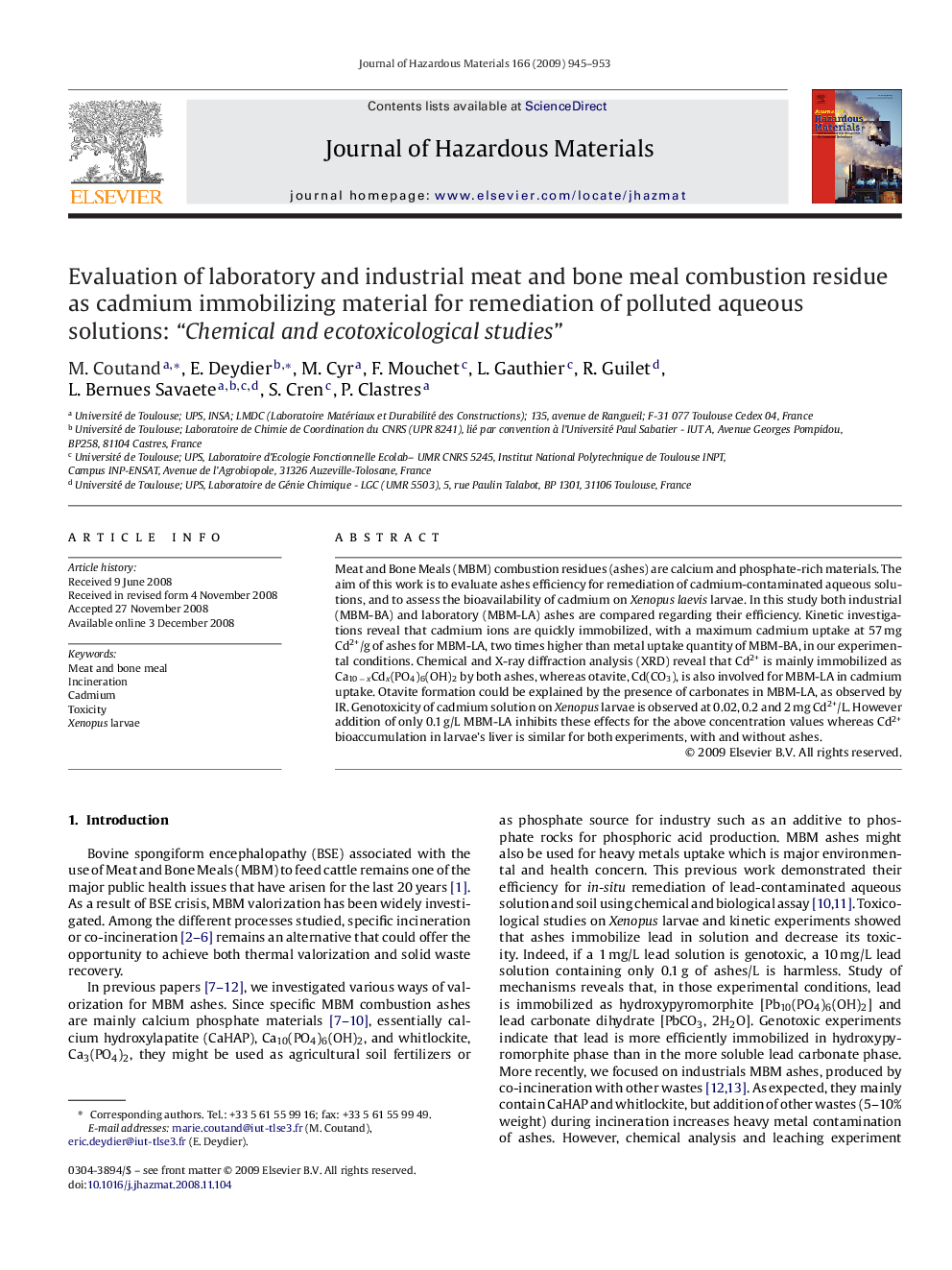| Article ID | Journal | Published Year | Pages | File Type |
|---|---|---|---|---|
| 582036 | Journal of Hazardous Materials | 2009 | 9 Pages |
Abstract
Meat and Bone Meals (MBM) combustion residues (ashes) are calcium and phosphate-rich materials. The aim of this work is to evaluate ashes efficiency for remediation of cadmium-contaminated aqueous solutions, and to assess the bioavailability of cadmium on Xenopus laevis larvae. In this study both industrial (MBM-BA) and laboratory (MBM-LA) ashes are compared regarding their efficiency. Kinetic investigations reveal that cadmium ions are quickly immobilized, with a maximum cadmium uptake at 57 mg Cd2+/g of ashes for MBM-LA, two times higher than metal uptake quantity of MBM-BA, in our experimental conditions. Chemical and X-ray diffraction analysis (XRD) reveal that Cd2+ is mainly immobilized as Ca10 â xCdx(PO4)6(OH)2 by both ashes, whereas otavite, Cd(CO3), is also involved for MBM-LA in cadmium uptake. Otavite formation could be explained by the presence of carbonates in MBM-LA, as observed by IR. Genotoxicity of cadmium solution on Xenopus larvae is observed at 0.02, 0.2 and 2 mg Cd2+/L. However addition of only 0.1 g/L MBM-LA inhibits these effects for the above concentration values whereas Cd2+ bioaccumulation in larvae's liver is similar for both experiments, with and without ashes.
Related Topics
Physical Sciences and Engineering
Chemical Engineering
Chemical Health and Safety
Authors
M. Coutand, E. Deydier, M. Cyr, F. Mouchet, L. Gauthier, R. Guilet, L. Bernues Savaete, S. Cren, P. Clastres,
